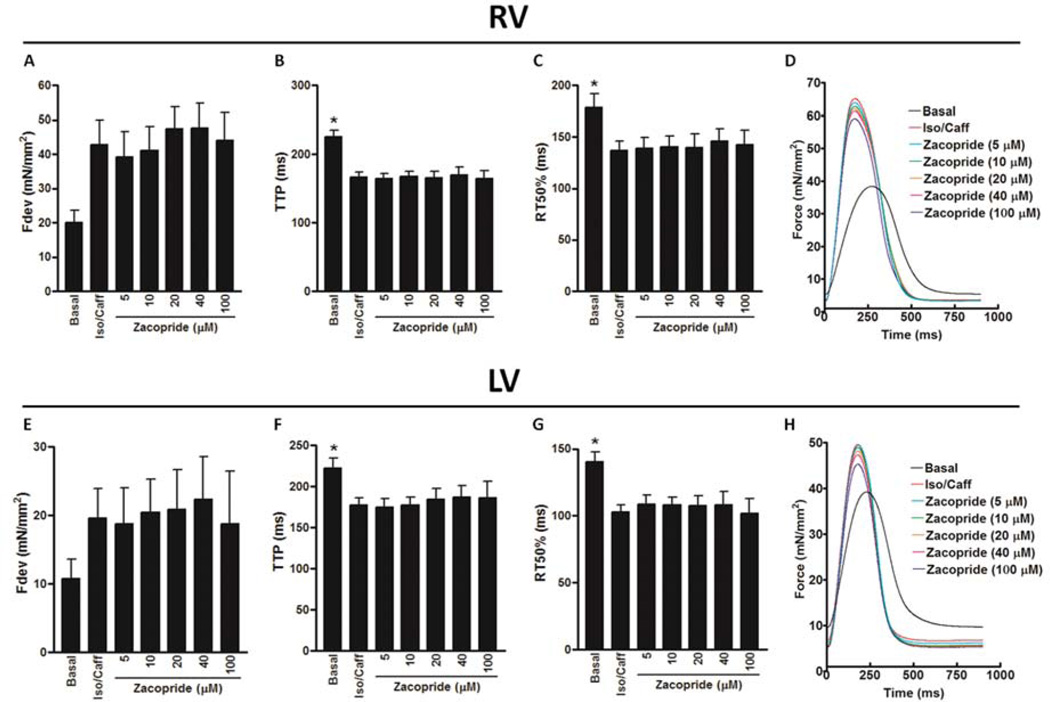Figure 3.
The effect of zacopride on Iso/Caff [isoproterenol (100 nmol/L)/caffeine (0.5 mmol/L)]-induced changes in contractility of ventricular trabeculae isolated from the RV, right ventricle of failing human hearts, which are not susceptible to Iso/Caff-provoked triggered arrhythmia including: Fdev, peak isometric developed force (A); TTP, time to peak force (B); and RT50, time from peak force to 50% relaxation (C). Original representative recordings of twitches (normalized to cross-sectional area) in the RV of failing human myocardium (heart # 611422) that is not susceptible to Iso/Caff-provoked triggered arrhythmia at basal status, in presence of Iso/Caff and zacopride concentrations (5 – 100 µmol/L) (D). The effect of zacopride on Iso/Caff-induced changes in contractility of ventricular trabeculae isolated from the LV, left ventricle of failing human hearts, which are not susceptible to Iso/Caff-provoked triggered arrhythmia including: Fdev (E); TTP, time to peak force (F); and RT50 (G). Original representative recordings of twitches (normalized to cross-sectional area) in the LV of failing human myocardium (heart # 611422) that are not susceptible to Iso/Caff-provoked triggered arrhythmia at basal status, in presence of Iso/Caff and zacopride concentrations (5 – 100 µmol/L) (H). *A significant change compared to Iso/Caff, P ≤ 0.05. n = 4 – 9 based on time-dependent increase in zacopride concentration.

